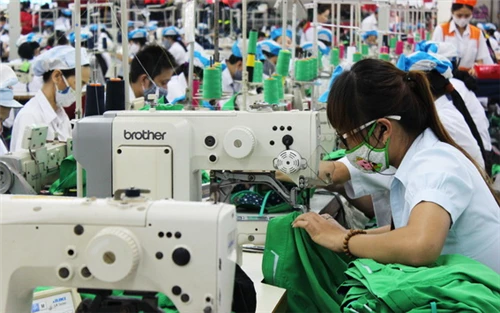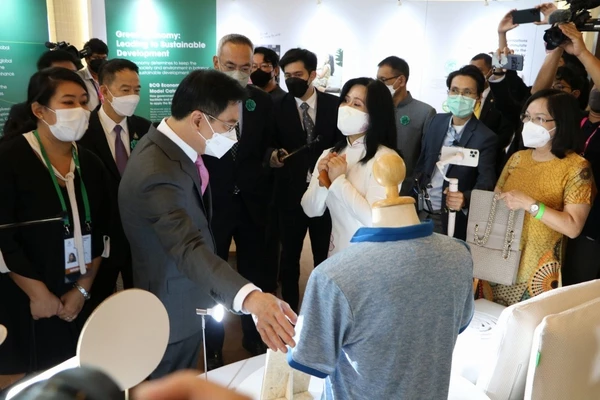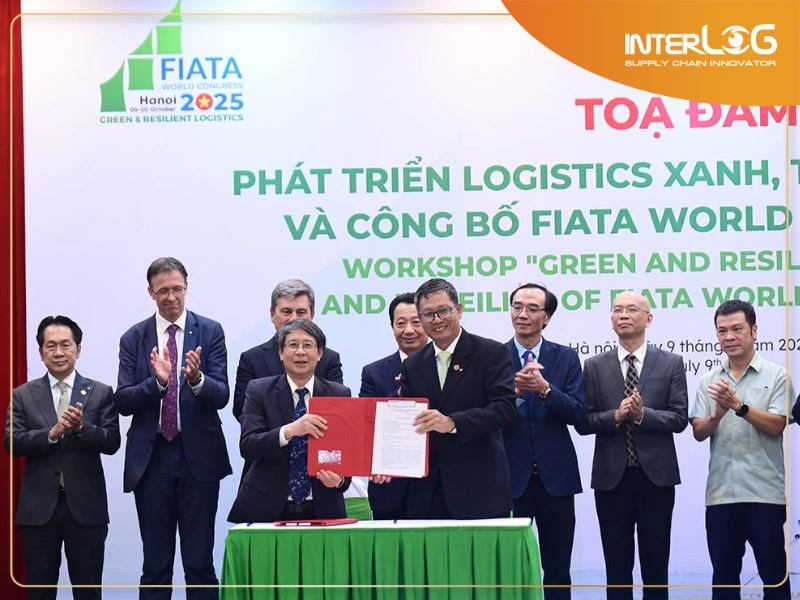From the marketplace to the world: Vietnamese textiles on the export track
The situation of the textile industry in Vietnam
Textile and garment is a key industry, contributing to an average sustainable export growth of 8% - 15% per year, essential to the country's economic development strategy. Currently, this industry employs more than 2 million workers and exports more than 40 billion USD/year, with the average income of workers reaching about 8.5 million VND/person/month.
On the morning of April 5, 2023, at the International Exhibition Specialized in Textiles, Equipment, and Materials 2023, Deputy Minister of Industry and Trade Phan Thi Thang said: "In recent years, Vietnam's textile industry has affirmed determining the role in creating jobs, social security, contributing a large amount of foreign currency and demonstrating its name in the socio-economic of Vietnam and the world. Despite being greatly affected by the Covid pandemic and geopolitical fluctuations in the world, Vietnam is still the third largest textile and garment exporter, with an export value of over 40.4 billion USD in 2021 and 2022 reached 44.4 billion USD, up 9.7% compared to 2021, trade surplus was 18.9 billion USD. The development strategy of Vietnam's textile, garment, and footwear industry sets a target: by 2030, textile and garment export turnover will reach $68-70 billion.

Textile and garment market in Vietnam (Source: Internet)
Challenges for Vietnam
In the context of international trade fluctuating, the demand for goods and textile products has decreased sharply, and enterprises in the industry are facing many difficulties in finding and maintaining markets and supplying raw materials sources and product consumption. Factors affecting the home textile industry:
- Hard market: Vietnam's textile and garment industry faces stiff competition from other countries in the region and globally. Regulations on quality, occupational safety, and environmental protection must also be met to participate in the global supply chain.
- Increasing prices of raw materials and labor: The cost of textile materials and work continues to rise, causing challenges for Vietnam's textile and garment industry, tiny and medium enterprises. Adjusting prices and improving labor productivity will be a pressure in the context of high prices.
- Technology has yet to thrive: Despite the potential for technological development and innovation in the textile and garment industry, investment in technology development has yet to be promoted, in line with international competition. This may pose a challenge to improving the productivity and competitiveness of the Vietnamese textile and garment industry in the future.
Besides, Bangladesh is the biggest obstacle threatening the current garment market of Vietnam, which is a formidable competitor in this field. Bangladesh is one of the world's largest garment exporters, competing directly with Vietnam. In the last two months of 2022, while the orders of Vietnamese enterprises have dropped significantly by 70-80%, the rankings are still busy visiting the Bangladesh "stop" to help the country maintain impressive growth.
So why is Bangladesh becoming such a potential and fertile garment export market?
Bangladesh soon grasped the situation, so it "quickly moved" to renew its appearance and implement the "greening" textile industry strategy. In the past, their factories and workshops were in terrible condition, seriously degraded, and even had occupational accidents. Still, now many of their factories have been upgraded to meet the standards to achieve the "green" certificate of the world. Specifically, 75% of Bangladesh's "green" factories are in the world's largest textile industry. This is an expensive competitive advantage for Bangladesh, helping them to get closer to the top position in the ranking of garment exporting countries. The world's principal concern is ESG-oriented solutions - a sustainable green supply chain model. With the global greening trend, countries aim for a logistics operation with social goals and protecting living space, minimizing negative environmental impacts. The more factories invest in modern equipment, clean energy, and recyclable and friendly materials, the more investors pay attention, thereby attracting "shark" orders poured in.
Any other opportunities for Vietnam?
Besides the immediate difficulties, Vietnam's door of opportunity is still open in this key industry market.
Deputy Minister Phan Thi Thang also emphasized changing thinking and strategies in the development vision of Vietnam's textile and garment industry, focusing on developing a large-scale complete textile production chain and investing in equipment and machinery-modern equipment, high automation, real-time automatic management, clean green production, and environmentally friendly. At the same time, enterprises in the textile and garment industry need to find appropriate directions, ensure jobs and social security for employees, and repel difficulties related to the epidemic to achieve sustainable development in the long term. It can be seen clearly through opportunities such as:
- Potential export markets: Vietnam's textile and garment industry has the opportunity to access significant export markets such as the US, EU, Japan, Korea, and China. In particular, Vietnam has signed many free trade agreements, such as CPTPP and EVFTA, creating favorable conditions for accessing these potential markets.
- Investment in high technology: Investing in high technology in textile production can help increase labor productivity, reduce production costs, and improve product quality. Applying automation, digital technology, and artificial intelligence can provide more significant competitive opportunities for Vietnam's textile and garment industry in the international market.
- Global supply chain shift: Moving the global supply chain, especially from China to other countries, can create opportunities for Vietnam's textile and garment industry. Taking advantage of low-cost labor and the ability to provide diverse and flexible textile products can help Vietnam attract investment from international companies.

Cooperation opportunities for Vietnam in the textile and garment industry (Source: Internet)
Summary
In addition to participating in implementing 15 free trade agreements (FTAs) with a comprehensive coverage of more than 60 countries and territories, including the world's largest markets, Vietnam is also promoting FTA negotiations with the European Free Trade Association (EFTA).
In addition, Vietnam is also one of 14 countries participating in the negotiations on the Indo-Pacific Economic Framework for Prosperity (IPEF). In particular, Vietnam has become one of the leading countries in the region in the formation of multilateral economic cooperation frameworks.
Currently, Vietnam is in the world's top 3 largest textile and garment exporting countries. The US is the largest market, followed by the EU, Korea, China, and Japan, which fluctuate about 10% of the total export turnover of the whole industry.
Building a green and sustainable Vietnamese textile and garment brand with tight and lean supply chain linkage is an inevitable requirement to fulfill the target desired by the Party and State for Vietnam's textile and garment industry. In particular, logistics activities must be optimized, moving towards green solutions such as reducing carbon emissions and net zero and effectively decreasing negative impacts on the environment so businesses can be assured of sustainable development.


.png)

